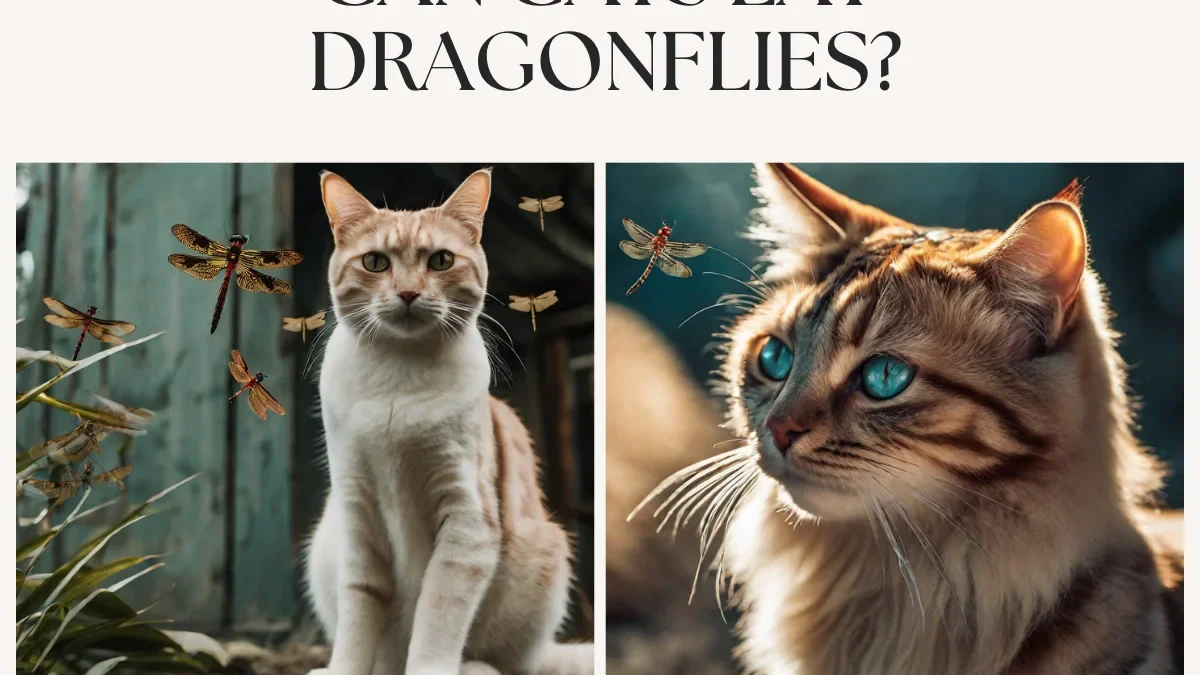If you’re a cat owner, you may have noticed your feline friend’s fascination with chasing after insects. One insect in particular that often catches their attention is the dragonfly. But as a responsible pet owner, you may be wondering, can cats eat dragonflies? Are dragonflies poisonous to cats? In this quick guide, we will delve into the details to help you understand whether or not it is safe for your cat to consume dragonflies.
Table of Contents
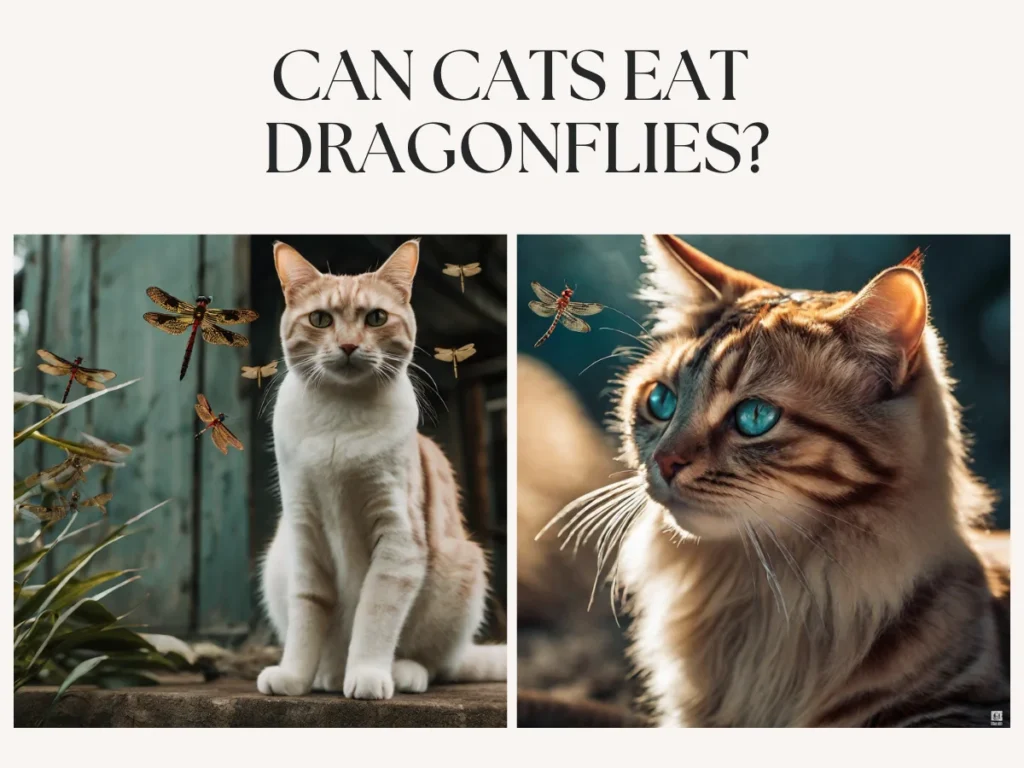
Unveiling the Dietary Habits of Cats
When it comes to cats and their dietary habits, it’s no secret that they are natural carnivores. These furry creatures have a strong instinct to hunt and catch prey, even if they’re domesticated. However, their taste in food can vary greatly depending on their individual preferences.
Cats have a wide range of dietary needs, and their choices can be influenced by a variety of factors, including age, health, and personal taste. In general, cats require a diet that is rich in animal protein and low in carbohydrates. This is because they have a limited ability to digest carbohydrates, and their bodies are designed to metabolize meat efficiently.
When it comes to insects, cats are naturally curious creatures and may be drawn to their small, quick movements. Insects can provide cats with a form of entertainment and stimulation. Some cats may even view them as prey and enjoy the thrill of the chase. However, it’s important to note that not all insects are safe for cats to consume.
While some insects, like dragonflies, are not inherently toxic to cats, it’s still not recommended to allow your cat to eat them. Dragonflies, like many insects, can come into contact with various chemicals and pesticides, which can be harmful if ingested. Additionally, dragonflies can be carriers of parasites, such as ticks or fleas, which can pose health risks to your cat.
To ensure the safety and well-being of your furry friend, it’s best to discourage them from eating dragonflies or any other insects. This can be done by providing plenty of interactive toys and playtime, as well as keeping your cat’s environment clean and free of pests. If you suspect that your cat has consumed a dragonfly or any other potentially harmful insect, it’s always a good idea to consult with your veterinarian for further guidance.
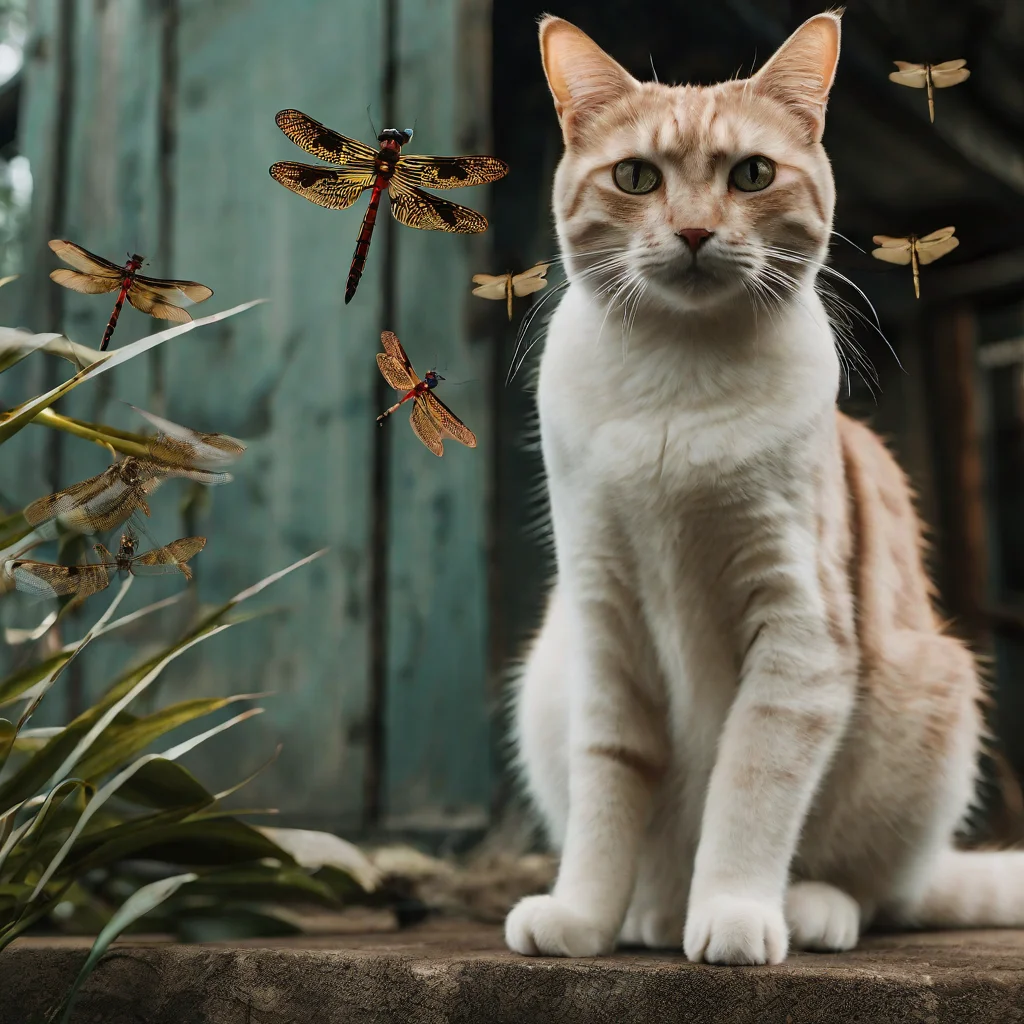
The Intriguing World of Dragonflies
Dragonflies are fascinating creatures that have captured the imagination of humans for centuries. With their intricate wings, vibrant colors, and graceful flight patterns, it’s no wonder they are often seen as mysterious and enchanting. But what is it about dragonflies that make them so intriguing?
Dragonflies belong to the order Odonata, which also includes damselflies. These ancient insects have been around for over 300 million years, making them one of the oldest insect groups on Earth. There are around 5,000 species of dragonflies found worldwide, each with their unique characteristics and adaptations.
One of the most fascinating aspects of dragonflies is their life cycle. These insects undergo a process called incomplete metamorphosis, which means they do not have a pupal stage like butterflies. Instead, dragonflies go through three stages: egg, nymph, and adult. The nymphs live in aquatic habitats, where they feed on small invertebrates and grow in size. Once they reach maturity, they emerge from the water and transform into the magnificent creatures we often see flying around.
Dragonflies are known for their exceptional flying abilities. They are incredibly agile and can maneuver in all directions, including hovering and flying backward. Their wings can beat up to 30 times per second, allowing them to reach impressive speeds. Some dragonfly species are among the fastest flying insects in the world, reaching speeds of up to 60 miles per hour!
In addition to their physical prowess, dragonflies also play important ecological roles. As voracious predators, they feed on mosquitoes, flies, and other small insects, helping to control their populations. This makes dragonflies beneficial to humans, as they can help reduce the spread of disease and pests.
Overall, the world of dragonflies is a captivating one. From their ancient lineage to their incredible flying abilities, these insects are truly remarkable. While they may be a source of fascination for both cats and humans, it’s important to remember that allowing your cat to consume dragonflies can pose potential risks to their health. To ensure the well-being of your feline friends, it’s best to discourage them from interacting with these intriguing insects and provide them with alternative forms of entertainment
Are Dragonflies Poisonous to Cats?
Many cat owners may be wondering, are dragonflies harmful to cats? The short answer is that dragonflies are not inherently toxic to cats, but that doesn’t necessarily mean they are safe for your furry friend to consume. While dragonflies themselves are not poisonous, they can come into contact with various chemicals and pesticides that may be harmful if ingested. Additionally, dragonflies can be carriers of parasites, such as ticks or fleas, which can pose health risks to your cat.
It’s important to remember that cats have a delicate digestive system and are not equipped to handle certain substances that insects may carry. Ingesting a dragonfly or any other insect can potentially lead to digestive upset, such as vomiting or diarrhea. This is why it’s best to discourage your cat from eating dragonflies or any other insects altogether.
Furthermore, it’s crucial to keep in mind that the environment in which dragonflies live can also impact their safety for cats. Dragonflies often inhabit areas near bodies of water, such as ponds or lakes, where they lay their eggs and spend their nymph stage. These habitats may contain harmful bacteria or chemicals that could harm your cat if consumed.
To ensure the well-being of your feline friend, it’s always best to discourage them from interacting with dragonflies or any other insects. Provide them with alternative forms of entertainment, such as interactive toys or playtime, to keep them mentally and physically stimulated. Additionally, keeping your cat’s environment clean and free of pests can help minimize the presence of insects in their vicinity.
If you suspect that your cat has consumed a dragonfly or any other potentially harmful insect, it’s important to monitor their behavior and consult with your veterinarian for further guidance. Your vet will be able to assess any potential risks and provide appropriate advice to keep your cat safe and healthy.
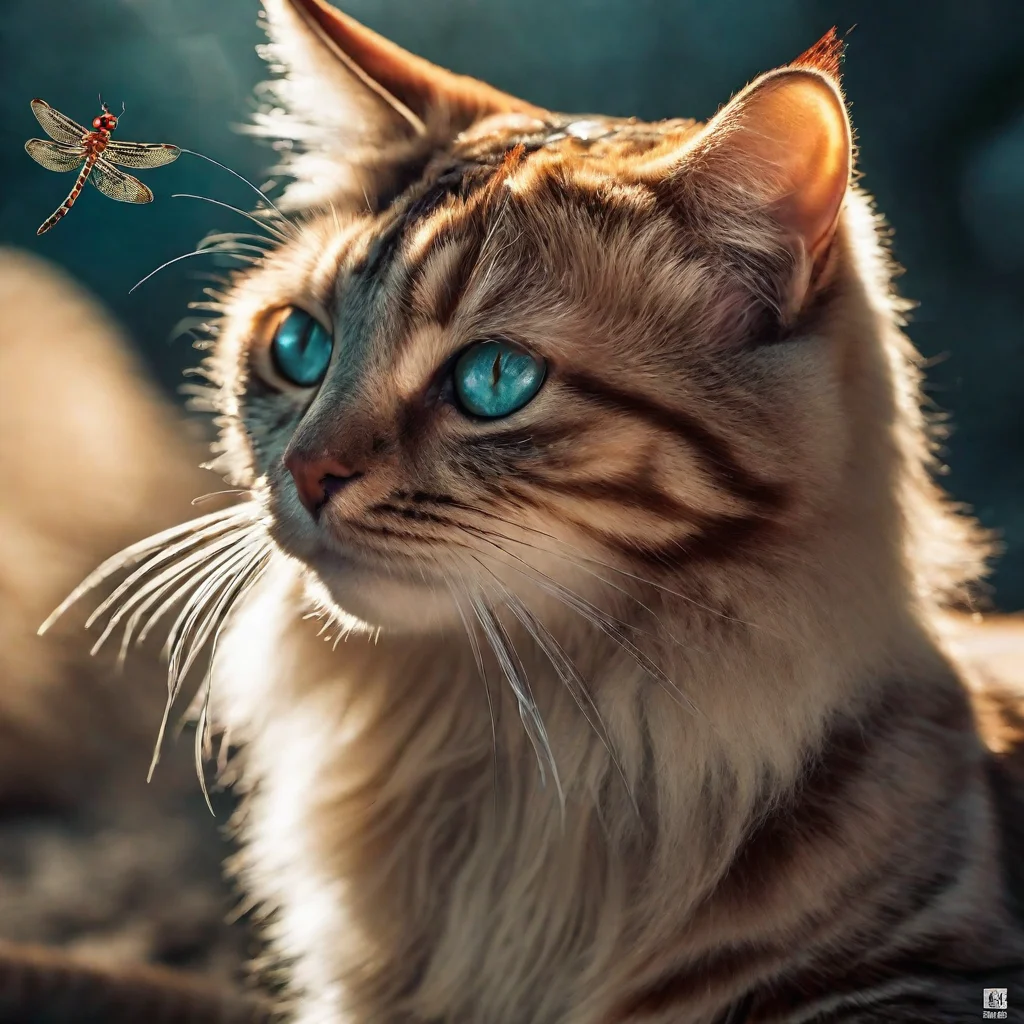
Potential Risks and Precautions when Cats Hunt Insects
Cats are natural hunters and their instinct to chase and catch insects is often irresistible. However, allowing your cat to indulge in this behavior can pose potential risks to their health. When cats hunt insects, there are several potential risks and precautions to consider.
Firstly, some insects may carry parasites such as ticks or fleas. These parasites can pose a health risk to your cat if ingested. It’s important to regularly check your cat for any signs of ticks or fleas, and consult with your veterinarian for appropriate preventive measures.
In addition, insects may come into contact with various chemicals and pesticides, especially in urban or suburban areas. These chemicals can be harmful if ingested by your cat. It’s crucial to discourage your cat from eating insects and to keep your environment free of harmful chemicals or pesticides.
Another risk to consider is the potential for choking or gastrointestinal obstruction. Insects have hard exoskeletons that can be difficult for cats to digest. If your cat consumes a large insect or a lot of insects at once, it can lead to digestive upset, vomiting, or even intestinal blockage. It’s important to monitor your cat’s behavior and consult with your veterinarian if you suspect they have eaten a large number of insects.
To minimize these risks, it’s best to discourage your cat from hunting and eating insects altogether. Provide them with plenty of interactive toys, playtime, and mental stimulation to redirect their natural hunting instincts. If your cat is an outdoor cat, consider creating a safe and secure outdoor enclosure where they can enjoy the sights and sounds of nature without being able to hunt insects.
How to Discourage Your Cat from Eating Dragonflies
If you’ve noticed that your cat has a keen interest in chasing after dragonflies, it’s important to take steps to discourage them from eating these intriguing insects. While dragonflies themselves are not inherently toxic to cats, they can come into contact with chemicals and pesticides that can be harmful if ingested. Additionally, dragonflies can be carriers of parasites, such as ticks or fleas, which can pose health risks to your furry friend.
To discourage your cat from eating dragonflies, there are several strategies you can try. First, provide your cat with plenty of interactive toys and playtime to redirect their hunting instincts. Engaging your cat in play will help keep them mentally and physically stimulated, reducing their desire to chase after insects.
It’s also important to keep your cat’s environment clean and free of pests. Regularly check your home for any signs of insects and take steps to remove them safely. If you have an outdoor cat, consider creating a safe and secure outdoor enclosure where they can enjoy the outdoors without the ability to hunt insects.
Additionally, consider providing alternative forms of entertainment for your cat. Puzzle toys, treat-dispensing toys, and interactive play sessions can help keep your cat engaged and satisfied. If you notice that your cat is particularly drawn to the movements of insects, you can also try providing them with a laser pointer or wand toy to mimic the movements of prey.
By implementing these strategies, you can help discourage your cat from eating dragonflies and ensure their safety and well-being. Remember to always consult with your veterinarian if you have any concerns or questions about your cat’s behavior or diet.
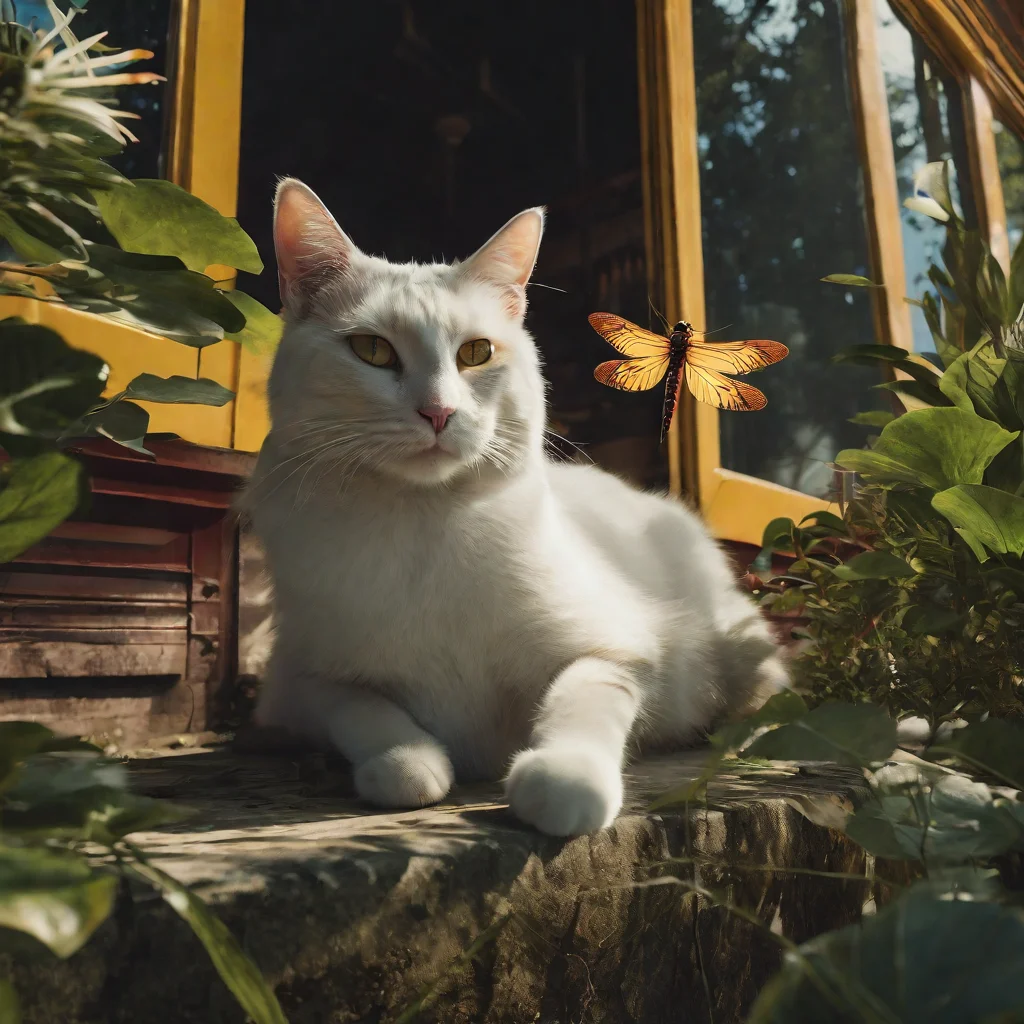
Alternatives to Insect Chasing for Indoor and Outdoor Cats
If your cat has a natural inclination to chase after insects, it’s important to provide them with alternative forms of entertainment to keep them mentally and physically stimulated. By redirecting their hunting instincts, you can help discourage your cat from chasing and eating insects like dragonflies. Here are some alternatives to insect chasing for both indoor and outdoor cats.
- Interactive Toys: Invest in a variety of interactive toys that simulate the movements of prey. Toys with feathers, strings, or bells can engage your cat’s hunting instincts and provide hours of entertainment. You can also try puzzle toys or treat-dispensing toys to keep your cat engaged and mentally stimulated.
- Laser Pointers: Cats are often fascinated by the quick movements of laser pointers. Using a laser pointer to create an elusive prey-like movement can keep your cat entertained and provide a safe alternative to chasing insects. Remember to never shine the laser pointer directly into your cat’s eyes.
- Wand Toys: Wand toys with feathers or strings attached to them can mimic the movements of insects and provide a great source of entertainment for your cat. Use the wand to move the toy in unpredictable patterns to keep your cat engaged and challenged.
- Outdoor Enclosures: If you have an outdoor cat, consider creating a safe and secure outdoor enclosure where they can enjoy the sights and sounds of nature without the ability to hunt insects. This will provide them with a stimulating outdoor experience while ensuring their safety.
Remember to always supervise your cat during playtime and provide a variety of toys to keep them entertained. By offering alternatives to insect chasing, you can satisfy your cat’s instincts while keeping them safe from potential risks associated with consuming insects.
Other Insects to Avoid Feeding Your Cat
When it comes to insects, not all of them are safe for cats to consume. While dragonflies may not be inherently toxic to cats, there are other insects that you should avoid feeding your feline friend. Here are a few other insects that are best kept out of your cat’s diet:
- Bees and Wasps: Bees and wasps are known for their painful stings, and cats are not immune to their effects. If your cat manages to catch one of these flying insects, they may end up with a painful sting in their mouth or throat. This can lead to swelling, difficulty breathing, or even an allergic reaction. It’s best to keep your cat away from these insects to avoid any potential harm.
- Fireflies: Fireflies, also known as lightning bugs, maybe mesmerizing to watch, but they should not be ingested by cats. Fireflies contain a chemical called lucibufagins, which can be toxic to cats if consumed in large amounts. If your cat eats a firefly, they may experience gastrointestinal upset, such as vomiting or diarrhea.
- Caterpillars: While some caterpillars may seem harmless, certain species can be dangerous to cats. Caterpillars like the puss caterpillar or the saddleback caterpillar have spines or bristles that can cause a painful sting or even an allergic reaction if they come into contact with your cat’s skin or are ingested. It’s best to keep your cat away from these hairy critters to prevent any harm.
- Spiders: Although most spiders are not toxic to cats, some species can pose a threat. Black widow spiders and brown recluse spiders are venomous and their bites can cause severe reactions in cats. It’s important to keep your cat away from areas where spiders may be present to avoid any potential bites.
To ensure the safety and well-being of your cat, it’s best to discourage them from eating any insects, including dragonflies. By providing alternative forms of entertainment and keeping your cat’s environment clean and free of pests, you can help minimize the risk of your cat consuming potentially harmful insects. Always consult with your veterinarian if you have any concerns about your cat’s diet or behavior.
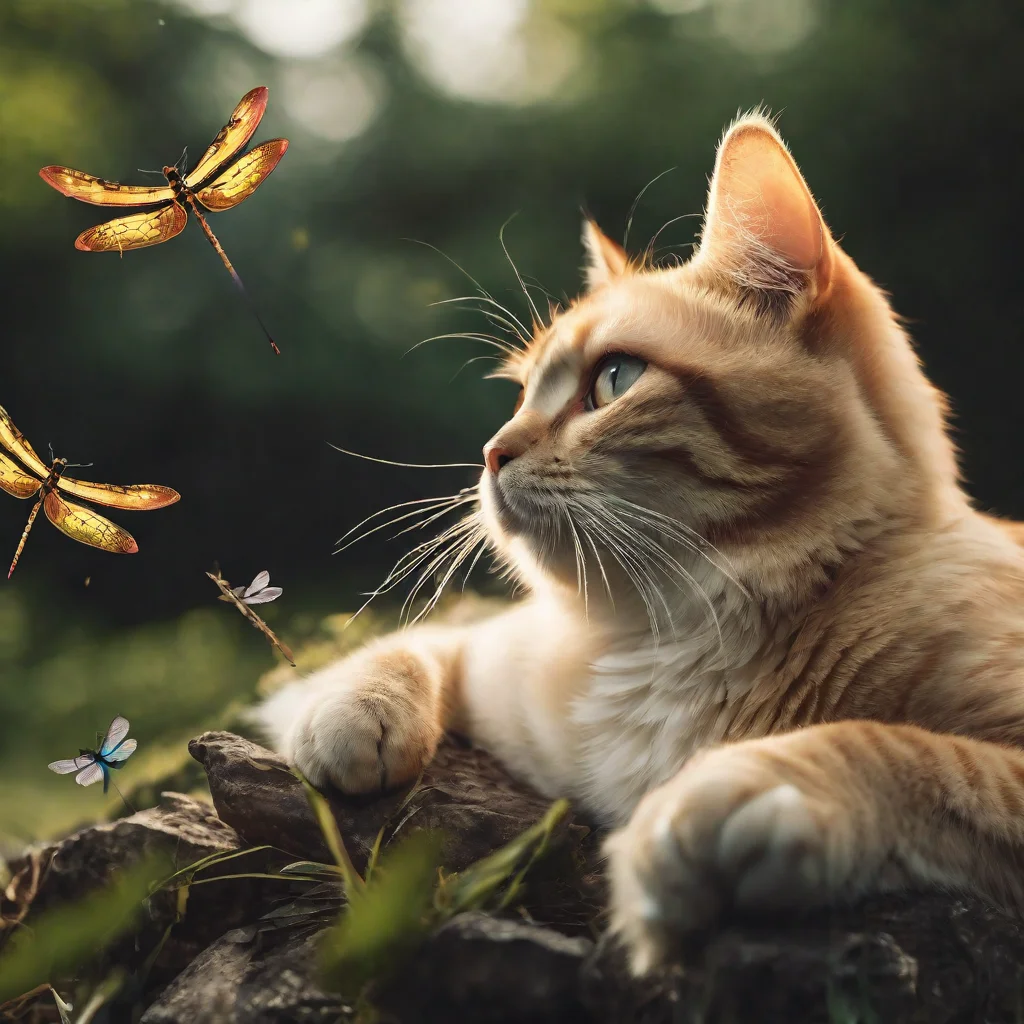
Tips for Safely Removing Dragonflies from Your Home
If you find dragonflies buzzing around your home and want to safely remove them without harm, here are some tips to follow:
- Use a Soft Cloth: Grab a soft cloth or towel and gently trap the dragonfly. Be careful not to squeeze or apply too much pressure, as this can harm the delicate wings.
- Create an Exit Path: Once you’ve trapped the dragonfly, carefully guide it towards an open window or door. This will give it a clear path to fly out of your home.
- Avoid Chemicals: Avoid using insecticides or sprays to kill the dragonfly. These chemicals can be harmful to your cat and the environment. Instead, opt for natural methods of removal.
- Turn off Lights: Dragonflies are attracted to bright lights, so turning off any unnecessary lights in your home can help prevent them from entering in the first place.
- Close Windows and Doors: To prevent dragonflies from entering your home, make sure all windows and doors are properly closed and sealed.
- Use Screens: Install window screens to create a barrier between your home and the outdoors. This will help keep dragonflies and other insects from entering your living space.
Remember, the goal is to safely remove the dragonflies without causing harm to them or your cat. By following these tips, you can maintain a harmonious environment for both you and your feline friend.
Can Dragonfly Bites Cause Allergic Reactions in Cats?
Dragonfly bites in cats can potentially cause allergic reactions, although they are relatively rare. Cats, like humans, can be sensitive to insect bites and may develop allergic reactions to the proteins present in the saliva of dragonflies. These allergic reactions can manifest as itchiness, redness, swelling, or hives at the site of the bite.
If your cat is allergic to dragonfly bites, you may notice them excessively scratching, licking, or biting at the affected area. They may also exhibit signs of discomfort, such as restlessness or irritability. In severe cases, allergic reactions can lead to difficulty breathing or anaphylaxis, which is a life-threatening allergic response.
If you suspect that your cat has had an allergic reaction to a dragonfly bite, it’s important to seek veterinary attention immediately. Your vet will be able to evaluate the severity of the reaction and provide appropriate treatment. This may involve administering antihistamines to alleviate the symptoms or in severe cases, providing emergency care to stabilize your cat’s condition.
Prevention is key when it comes to protecting your cat from allergic reactions to dragonfly bites. Avoiding areas where dragonflies are prevalent, such as bodies of water, can reduce the likelihood of exposure. Additionally, keeping your cat indoors during peak dragonfly activity can help minimize the risk of bites.
Conclusion
In conclusion, while dragonflies may not be inherently toxic to cats, it is best to discourage your furry friend from eating them. Dragonflies can come into contact with chemicals and pesticides that may be harmful if ingested, and they can also be carriers of parasites, such as ticks or fleas, which can pose health risks to your cat. Cats have a delicate digestive system, and ingesting a dragonfly or any other insect can potentially lead to digestive upset and other complications.
To keep your cat safe and entertained, provide plenty of interactive toys and playtime to redirect their hunting instincts. Engaging your cat in play will help keep them mentally and physically stimulated, reducing their desire to chase after insects. It’s also important to keep your cat’s environment clean and free of pests and to regularly check for any signs of ticks or fleas.
Remember, there are alternative forms of entertainment for your cat, such as puzzle toys, treat-dispensing toys, and interactive play sessions. By offering these alternatives and ensuring your cat’s environment is insect-free, you can minimize the risks associated with consuming insects and provide a safe and enjoyable environment for your feline friend. If you have any concerns or questions about your cat’s behavior or diet, always consult with your veterinarian for further guidance.
FAQs
Q: Is it OK for a cat to eat a dragonfly?
A: It is generally safe for a cat to eat a dragonfly. Dragonflies are not toxic or harmful to cats. However, it’s important to note that the wings and exoskeleton of a dragonfly can be difficult for a cat to digest, and it may cause mild digestive upset or be uncomfortable when passing through the digestive system. If your cat frequently consumes large insects like dragonflies, it’s recommended to monitor them for any signs of discomfort or digestive issues.
Q: Are dragonflies poisonous to eat?
A: Dragonflies are not poisonous to eat. They do not possess any venom or toxins that would be harmful to cats if consumed. However, as mentioned earlier, the wings and exoskeleton of a dragonfly can be challenging to digest and may cause mild digestive upset in some cats.
Q: Is it OK for a cat to eat a fly?
A: It is generally safe for a cat to eat a fly. Flies are not toxic or harmful to cats, and many cats enjoy chasing and catching them as part of their natural hunting behavior. However, it’s worth noting that flies can potentially carry parasites or diseases, so it’s best to discourage your cat from consuming flies or any other insects that may pose health risks.
Q: Is it OK for cats to eat bugs?
A: In general, it is considered safe for cats to eat bugs. Cats are natural hunters and may occasionally catch and eat small insects like bugs. However, it’s important to be cautious and ensure that the bugs your cat consumes are not toxic or carrying any parasites or diseases. Some bugs, such as bees, wasps, or spiders, can sting or bite and may cause harm to your cat. It’s best to supervise your cat’s interactions with bugs and discourage them from consuming insects that may pose a risk to their health.
Related Reads:

